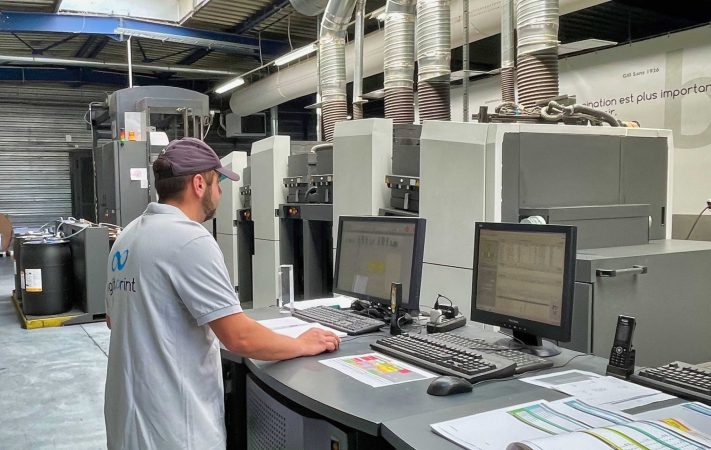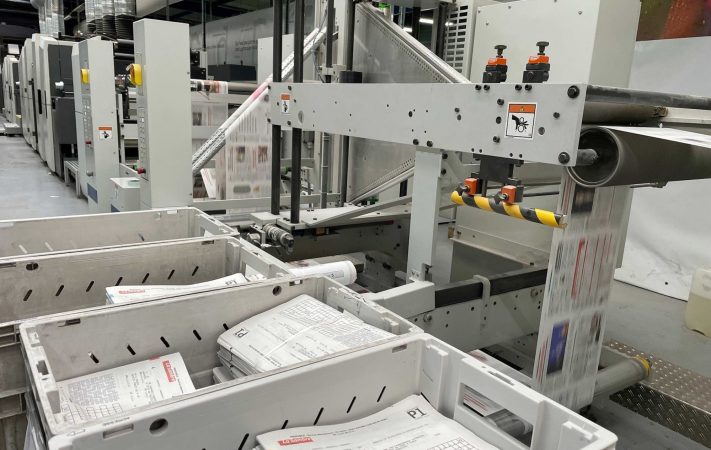Avesnes-sur-Helpe, France
Digitaprint
Kodak's PROSPER inkjet technology powers Digitaprint's high-value, micro-edition news weeklies to the forefront of hyperlocal news
Company
Subsidiary of French publishing group Sogemedia, with 35 employees. Publishes weekly regional newspapers across France
Challenge
Attract and retain readers and advertisers in the fast-moving world of local media, where circulation is down and costs are up
Kodak Solution
PROSPER 6000C Press
Stream Continuous Inkjet Technology
Introduction
As a regional newspaper printer, Digitaprint's business hinges on the ability to keep people reading — so that advertisers continue to place ads. Digitaprint was an early adopter of Kodak's PROSPER inkjet technology, using it to drive a forward-looking custom publishing strategy — that also cut costs. As the publishing world continues to evolve, it's a decision that keeps paying back.
The Business Need
The acceleration of the digital age presented the regional newspaper industry with some serious challenges. First, consumer tastes changed — leaving publishers in a fight for people's attention. That meant standing out against other newspapers, as well as everything from websites to social media and online video content. To win the loyalty of readers and advertisers, for their own titles and for those they print on behalf of other publishers, Digitaprint had to be producing fresh and enticing content. That meant abandoning standard publishing models and creating more personalized, hyperlocal publications.
A related challenge is that of declining circulations. There was a time when Digitaprint typically produced runs of 15,000 copies. With run lengths becoming much shorter, offset soon became too expensive for Digitaprint's production volumes.
And paper and ink costs have kept going up. Inks account for a large proportion of the production outlay in inkjet printing, and they are a fundamental factor in the economics of the process. When Digitaprint was looking to swap from offset to inkjet, it needed a solution that took this into account. The result needed to be flexible enough to adapt to the added complexity that no doubt lay ahead.
The Kodak Solution
In 2016, Digitaprint's parent company Sogemedia invested in a KODAK PROSPER 6000C Press, installed at Digitaprint's base in Avesnes-sur-Helpe, northern France.
With KODAK Stream Continuous Inkjet Technology at its core, the PROSPER 6000C blended the productivity of offset with the flexibility of digital, printing 1,000 feet (300m) per minute. And, as Kodak developed and produced the inkjet inks itself, it retained full control of both ink supply and prices. This spoke directly to Digitaprint's concerns over costs.
Sogemedia was keen to implement in-line production from the paper roll to the finished, folded and stacked newspapers. Kodak could demonstrate experience operating the FoldLine finishing line from manroland Goss web systems, in combination with the PROSPER 6000C.
The benefits were clear. Today, Digitaprint uses the press to print 20 of Sogemedia's weeklies, as well as titles for other publishers. The press runs for an average of 11 hours a day, at a speed of 919 feet (280m) per minute, at 600 x 600 dpi. And it operates even longer during peak production — around 20 hours a day. What's more, while offset press production required five employees per shift, it now takes only two to operate the entire set-up.
The Outcome
In 2016, the switch brought Digitaprint to the leading edge of hyperlocal newspaper publishing. And the KODAK PROSPER 6000C delivered plenty of specific benefits — including incredibly stable color consistency that met the stringent requirements for print quality and resolution.
But that's not just yesterday's news. As the publishing landscape continues to produce fresh challenges, Digitaprint's Kodak set-up means the company can adapt easily. For example, one of their local weeklies, distributed in the heart of France, used to publish only one edition per week. It now produces seven different versions every week, with specific content and web ads for seven different districts in the circulation area. As a result, Digitaprint has managed to buck the general trend in local news publishing and increase its readership, boosting the publication's appeal among advertisers.
By cutting out the printing plates and platemaking from the production process, and generating very short makeready times, the press is proving especially cost-effective at a time of rising paper costs. The company can now produce runs of up to 10,000 24-page titles (or up to 5,000 48-page titles) more profitably, and more economically, than with offset.
Digitaprint has also benefited from a significant decrease in waste. Using newspaper offset before, they could easily end up with 1,500 copies of start-up waste. Now, the digital production line leaves only 20 to 30 copies.
Contact Us
Contact a Kodak sales representative to learn how our products and solutions can help grow your business.





